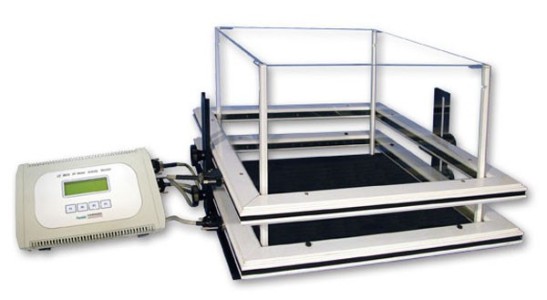Authors
G. Jordakieva, J. Wallmann, R. Schmutz, P. Lemell, M. Wegmann et al.
Lab
Medical University of Vienna & University of Vienna, Vienna, Austria
Journal
PLOS One
Abstract
Background and Aims
Specific hyper-responsiveness towards an allergen and non-specific airway hyperreactivity both impair quality of life in patients with respiratory allergic diseases. We aimed to investigate cellular responses following specific and non-specific airway challenges locally and systemically in i) sensitized BALB/c mice challenged with grass pollen allergen Phl p 5, and in ii) grass pollen sensitized allergic rhinitis subjects undergoing specific airway challenge in the Vienna Challenge Chamber (VCC).
Methods and Results
BALB/c mice (n = 20) were intraperitoneally immunized with grass pollen allergen Phl p 5 and afterwards aerosol challenged with either the specific allergen Phl p 5 (n = 10) or the non-specific antigen ovalbumin (OVA) (n = 10). A protocol for inducing allergic asthma as well as allergic rhinitis, according to the united airway concept, was used. Both groups of exposed mice showed significantly reduced physical activity after airway challenge. Specific airway challenge further resulted in goblet cell hyperplasia, enhanced mucous secretion, intrapulmonary leukocyte infiltration and lymphoid follicle formation, associated with significant expression of IL-4, IL-5 and IL-13 in splenocytes and also partially in lung tissue. Concerning circulating blood cell dynamics, we observed a significant drop of erythrocyte counts, hemoglobin and hematocrit levels in both mouse groups, challenged with allergen or OVA. A significant decrease in circulating erythrocytes and hematocrit levels after airway challenges with grass pollen allergen was also found in grass pollen sensitized human rhinitis subjects (n = 42) at the VCC. The effects on peripheral leukocyte counts in mice and humans however were opposed, possibly due to the different primary inflammation sites.
Conclusion
Our data revealed that, besides significant leukocyte dynamics, particularly erythrocytes are involved in acute hypersensitivity reactions to respiratory allergens. A rapid recruitment of erythrocytes to the lungs to compensate for hypoxia is a possible explanation for these findings.
BIOSEB Instruments Used
Infrared Actimeter (LE8815)
Source :
http://www.plosone.org/article/authors/info%3Adoi%2F10.1371%2Fjournal.pone.0086701

 Douleur - Allodynie/Hyperalgésie Thermique
Douleur - Allodynie/Hyperalgésie Thermique Douleur - Spontanée - Déficit de Posture
Douleur - Spontanée - Déficit de Posture Douleur - Allodynie/Hyperalgésie Mécanique
Douleur - Allodynie/Hyperalgésie Mécanique Apprentissage/Mémoire - Attention - Addiction
Apprentissage/Mémoire - Attention - Addiction Physiologie & Recherche Respiratoire
Physiologie & Recherche Respiratoire




































 Douleur
Douleur Système Nerveux Central (SNC)
Système Nerveux Central (SNC)  Neurodégénérescence
Neurodégénérescence Système sensoriel
Système sensoriel Système moteur
Système moteur Troubles de l'humeur
Troubles de l'humeur Autres pathologies
Autres pathologies Système musculaire
Système musculaire Articulations
Articulations Métabolisme
Métabolisme Thématiques transversales
Thématiques transversales Congrès & Meetings
Congrès & Meetings 